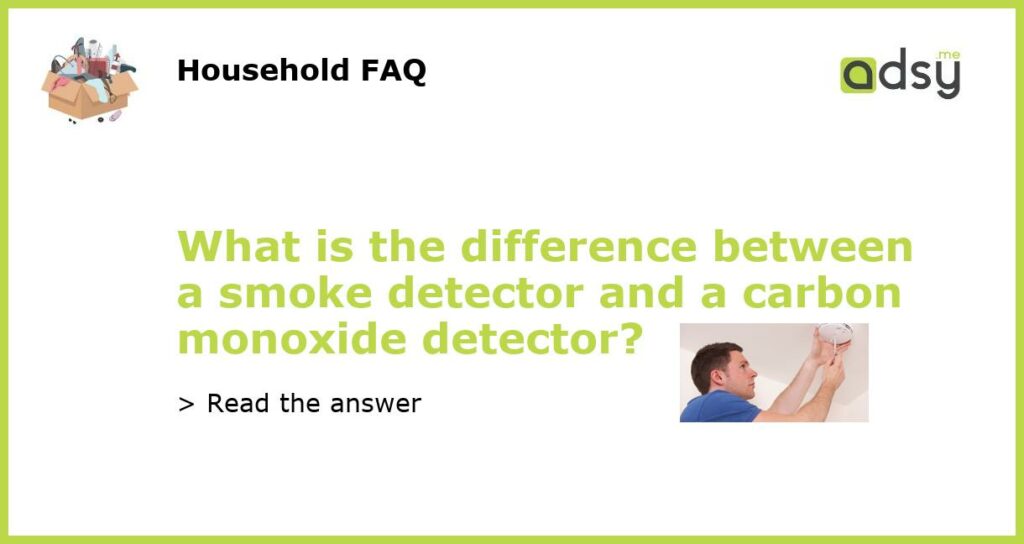What is the difference between a smoke detector and a carbon monoxide detector?
Smoke detectors and carbon monoxide detectors are both essential safety devices in a home or building. While they both serve the purpose of detecting potential hazards, they are designed to detect different types of dangers. Understanding the differences between the two can help ensure the safety of your household.
Smoke detectors: Protecting against fire hazards
Smoke detectors are devices that monitor the air for the presence of smoke, which could indicate the presence of a fire. They are designed to detect particles or aerosols that are produced during the combustion process. When a significant amount of smoke is detected, the smoke detector will sound an alarm to alert occupants of the potential fire hazard.
Smoke detectors typically use two main types of sensors to detect smoke: ionization and photoelectric. Ionization smoke detectors are more sensitive to flaming fires, while photoelectric smoke detectors are more sensitive to smoldering fires. Most modern smoke detectors use both types of sensors to provide comprehensive protection against different types of fires.
Carbon monoxide detectors: Detecting the silent killer
Carbon monoxide detectors, on the other hand, are designed to detect the presence of carbon monoxide gas. Known as the “silent killer,” carbon monoxide (CO) is a colorless, odorless, and tasteless gas that can be produced by the incomplete combustion of fossil fuels such as gas, oil, and coal. It is highly toxic and can cause illness or even death if inhaled in high concentrations.
Carbon monoxide detectors use sensors to measure the level of carbon monoxide in the air. When the concentration of carbon monoxide reaches a certain threshold, the detector will sound an alarm to alert occupants of the potential danger. It is important to note that carbon monoxide detectors are not designed to detect smoke or flames, so they should be used in conjunction with smoke detectors for comprehensive home safety.
Key differences between smoke detectors and carbon monoxide detectors
1. Detection method: Smoke detectors detect smoke particles or aerosols in the air, while carbon monoxide detectors measure the concentration of carbon monoxide gas.
2. Purpose: Smoke detectors primarily protect against fire hazards, while carbon monoxide detectors protect against the dangers of carbon monoxide poisoning.
3. Sensors: Smoke detectors use ionization and photoelectric sensors to detect smoke particles, while carbon monoxide detectors use electrochemical sensors to measure carbon monoxide levels.
4. Alarm sound: Smoke detectors typically produce a loud, intermittent alarm sound to alert occupants to the presence of smoke, while carbon monoxide detectors often feature a continuous, beeping alarm sound.
5. Combination detectors: Some manufacturers offer combination smoke and carbon monoxide detectors, which provide both types of protection in one device. These combination detectors can be a convenient and cost-effective option for ensuring comprehensive safety in your home.
Ensuring comprehensive safety
While smoke detectors and carbon monoxide detectors may seem similar, they serve different purposes and detect different hazards. It is important to have both types of detectors installed in your home to ensure comprehensive safety. Regular testing, maintenance, and battery replacement are essential to ensure that these devices are functioning properly. Additionally, it is important to follow the manufacturer’s guidelines for installation and placement to ensure optimal protection. By having both smoke detectors and carbon monoxide detectors in your home, you can have peace of mind knowing that you are well-prepared to detect and respond to potential hazards.

